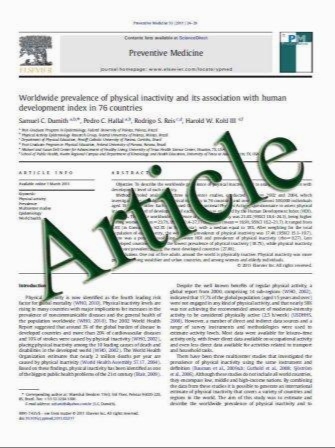No consequences of dietary n-3 polyunsaturated fatty acid deficiency on the severity of scopolamine-induced dry eye
- نوع فایل : کتاب
- زبان : انگلیسی
- مؤلف : Sabrina Viau & Bruno Pasquis & Marie-Annick Maire & Cynthia Fourgeux & Stéphane Grégoire & Niyazi Acar & Lionel Bretillon & Catherine P. Creuzot-Garc
- چاپ و سال / کشور: 2010
Description
Purpose Epidemiological studies suggest that dietary n-3 polyunsaturated fatty acids (PUFAs) may protect against dry eye. This study aimed to evaluate whether a dietary deficiency in n-3 PUFAs may increase the severity of the pathology in a scopolamine-induced model of dry eye in the rat. Methods Lewis rats of three consecutive generations were bred under a balanced diet or a diet deprived of n-3 PUFAs. Dry eye was experimentally induced by continuous scopolamine delivery in female animals from the third generation of both groups. After 10 days of treatment, the clinical signs of ocular dryness were evaluated in vivo using fluorescein staining. MHC II and the rat mucin rMuc5AC were immunostained on ocular sphere cryosections. The transcript levels of the pro-inflammatory cytokines interleukin (IL)-1â, IL-6, tumor necrosis factor (TNF)-á and interferon (IFN)-ã were quantified in the exorbital lacrimal glands (LG) and in the conjunctiva using reverse transcription followed by polymerase chain reaction. Lipids were extracted from the exorbital LG for fatty acid analysis of the phospholipids using gas chromatography. Results When compared to control animals, the scopolamine treatment induced an increase in the cornea fluorescein staining score (from 0.5±0.0 to 2.5±1.0 arbitrary units (AU) for the balanced diet and from 1.2±0.8 to 2.6± 0.5 AU for the n-3 PUFA-deficient diet); a decrease in rMuc5AC immunostaining in the conjunctival epithelium (.34% for the balanced diet and .23% for the n-3 PUFAdeficient diet); an increase in the LG transcript levels of TNF-á for the balanced diet and of TNF-á and IFN-ã for the deficient diet; an increase in the conjunctival transcript levels of IL-1â and IL-6 for the deficient diet; an increase in arachidonic acid (AA) and in the Ä5-desaturase index (ratio of AA to dihomo-gamma-linolenic acid) in the exorbital LG for both diets. When compared to the balanced diet, the n-3 PUFA-deficient diet induced an increase in the LG transcript levels of IL-6 for the control animals and of TNF-á for the control and dry eye animals as well as an increase in the conjunctival transcript levels of IL-6 for the dry eye animals. There was no significant diet difference in fluorescein staining, rMuc5AC, and MHC II immunostaining scores. Conclusions Our data suggest that an n-3 PUFA deficiency does not increase the severity of dry eye in a rat model of dry eye.
Graefes Arch Clin Exp Ophthalmol (2011) 249:547–557 DOI 10.1007/s00417-010-1576-6 Received: 28 June 2010 / Revised: 5 November 2010 / Accepted: 15 November 2010 / Published online: 16 December 2010


